- The crew trains, NASA (re)discovers lunar missions
- A rocket in parts
- Orion, equipped like never before
- NASA is preparing the following copies
- Around the Moon or on the Moon?
After years of delays, NASA successfully tested its Orion capsule around the Moon last year. A dress rehearsal for a first manned flight still planned for next year, and everything suggests that the rocket, its capsule and the astronauts will be there.
In November 2022, NASA achieved a real feat with its Artemis I mission. In three weeks, thanks to an impeccable takeoff of the giant SLS (Space Launch System) rocket, then a trip around the Moon by the Orion capsule, which concluded exactly as planned off the coast of California, the American agency silenced the countless critics of the program.
Its staggering costs and its billions of dollars of extra-budget overruns, its years of delay (just think, the mission, which was then called EM-1, was announced for 2018)… Not everything was forgotten, but the Artemis program has revived impatience for new manned lunar missions. And in 2023, the agency continues this tour de force, because it is not (too) late, the departure of the four pioneers for a trip around the Moon is still planned for next year.
The crew trains, NASA (re)discovers lunar missions
Last April, the American agency selected with great fanfare Reid Wiseman (commander), Victor Glover (pilot), Christina Koch and Canadian astronaut Jeremy Hansen as the first crew for Artemis II. Together, they will leave for a two-to-three-week mission aboard the Orion capsule to fly over the Moon. This appointment took place very early, but NASA is taking advantage of it, because it now has luxury ambassadors for its lunar program.
Indeed, the four astronauts have traveled a lot in recent months. Here they are today in Florida for an event “ to meet their capsule », on the launch pad to test the equipment and suits, in New Orleans to visit the production of the rocket, or even in Bremen, Germany, to see the production line of European service modules. An American-style “soft power” that works well: Reid, Victor, Christina and Jeremy are indeed the next humans to fly to the Moon.
For NASA, it is also an opportunity to get started on certain aspects of manned missions that it has no longer been involved in since the end of the shuttles. Indeed, for the light suits or diving suits of the Crew Dragon capsule, SpaceX takes care of them. For Artemis, it’s NASA. Likewise, it was necessary to test the vehicles to take the astronauts to the launch site, the boarding and emergency procedures, the pivoting access arm… So many systems to manage for missions that are getting closer.
The American agency even took the opportunity to set up new training for later. So, even if the four members of Artemis II will not set foot on the Moon, NASA has given them geology lessons, explained sample handling, etc. You have to start somewhere, and a lunar program is a very different set of missions than well-rehearsed rotations to the ISS.
A rocket in parts
The Space Launch System rocket, which will propel astronauts to the Moon, is not yet ready, and it is logical, one year before its takeoff. But the elements that constitute it will soon all be brought together in Florida to start assembly in the first quarter of 2024. The elements of the two gigantic auxiliary boosters, for example, arrived in September at the Kennedy Space Center by rail convoy.
Unloaded from their special train, the ten segments will be prepared, then pre-assembled in the assembly building, the VAB. A majority of the other parts are also on site, such as the second stage of the rocket, the ICPS or the adapters. The first floor is still missing, which is still on the Michoud site in New Orleans. But for several weeks, the latter has been complete, with the addition of its four engines, and it is undergoing some unit tests while waiting for the last late parts (the fault of an external supplier) before being sent by barge in mid -December.
Another important element, the launch tower, which allows the tanks to be filled, ensures the stability of the rocket and allows access for astronauts, has been under test on the launch pad since August. It was repaired after the Artemis I takeoff, then fitted out to accommodate the astronauts. When its tests are completed, it will be taken with the firing table into the VAB directly to support assembly operations. In terms of communication, it will also be a powerful tool. This time, NASA will once again assemble a manned lunar rocket.
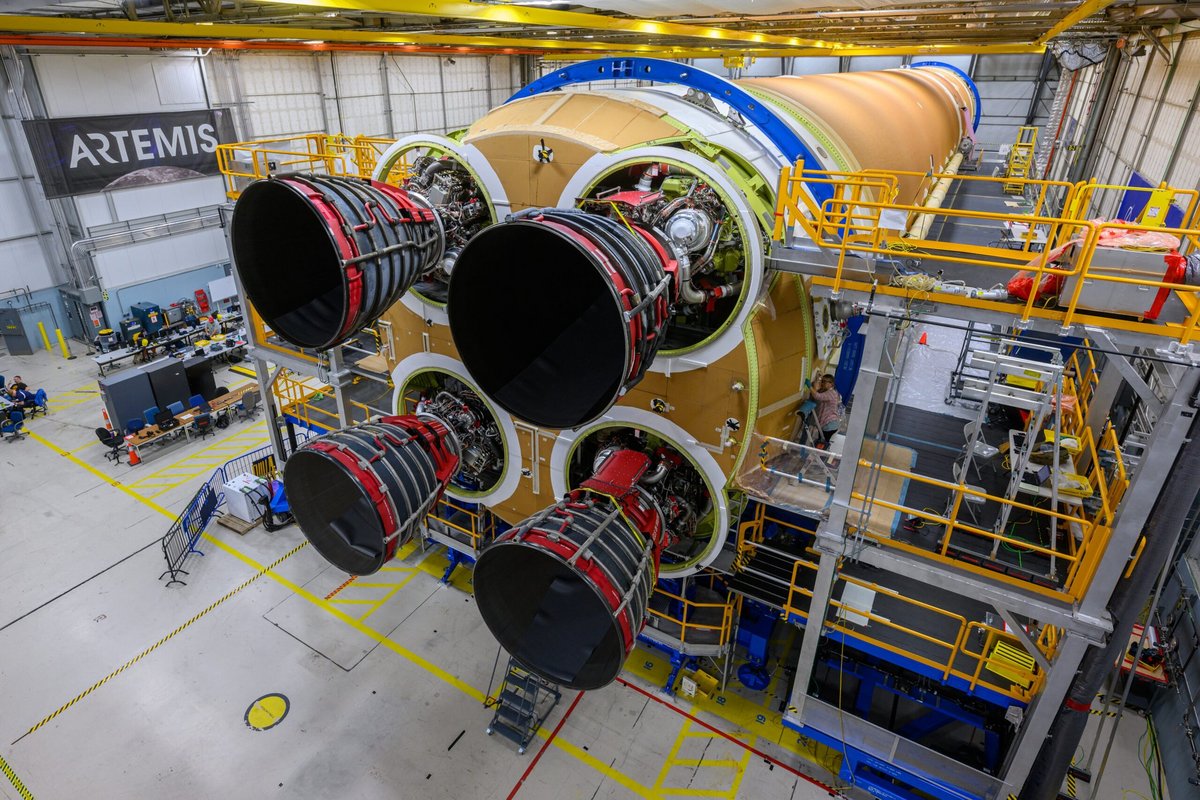
Orion, equipped like never before
Behind the technical demonstration of Artemis I, we tend to forget that the mission did not test absolutely all aspects of a manned adventure around the Moon, in particular because there was no one on board ( apart from three models). The Orion capsule for Artemis II will indeed be the first to carry the entire life support system.
More spacious than Apollo, it will still have to accommodate 4 people in a very restricted space for several weeks, and here too, it is a significant change compared to the habits of modern astronauts, accustomed to adventures in low orbit in the ISS. But the astronauts also had their say during the preparation of Orion and about the interior equipment, modeled with their feedback.
Orion is currently being assembled with its European Service Module (ESM), which has already been extensively tested since its delivery. The capsule must be monitored closely, because with its latest tests, it will probably only be assembled with the SLS rocket in summer 2024. This is one of the stages of the “critical path” so that the whole can take off before the end of next year. If Orion or any of its equipment falls behind schedule, then the entire shooting campaign falls behind schedule. And for those who don’t remember last year, there are specific firing windows for each departure for the Moon, which only repeat for a few days each month.
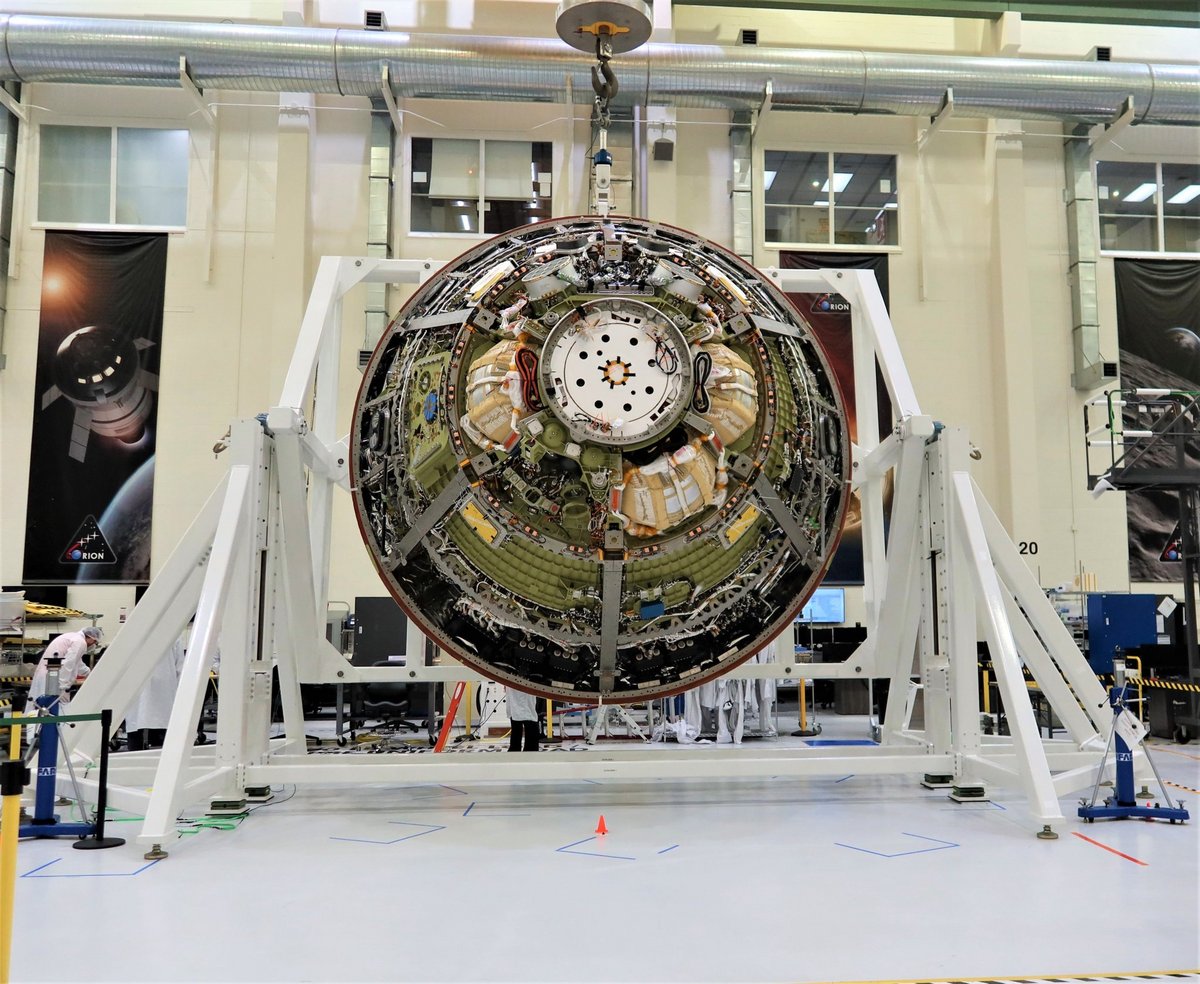
NASA is preparing the following copies
As there has only been one Artemis mission, it is not yet completely obvious to the general public, but the architecture of NASA’s lunar project revolves around mission continuity over the decade. Currently, the hardware for Artemis II is produced, but, as we explained, not quite assembled yet.
In reality, a good part of the rocket components for Artemis III are already ready too, and are in storage or final preparation. This is the case for the booster elements (stored in Utah), the ICPS upper stage, which is already being prepared in Florida, or the European service module, which will be sent to the United States by the end of the year. To go faster, NASA and Boeing are even preparing the central stage by changing methods, the engine section in Florida and the rest in New Orleans.
As for the Orion capsules, it’s a bit of a slow traffic jam in the Armstrong preparation building at the Kennedy Space Center. We find the vehicles for Artemis II, III, IV at different stages of preparation!
However, as NASA elements align for the rest of the missions, we may notice that some other future elements are missing. The most glaring today is undoubtedly Starship which, following its flight failure last April, has not yet received authorization to attempt a second test and fly to space. This delayed development risks not only penalizing SpaceX, but also NASA and its astronauts, because the private company’s vehicle is absolutely necessary in the architecture planned for the moment in order to set foot on the Moon.
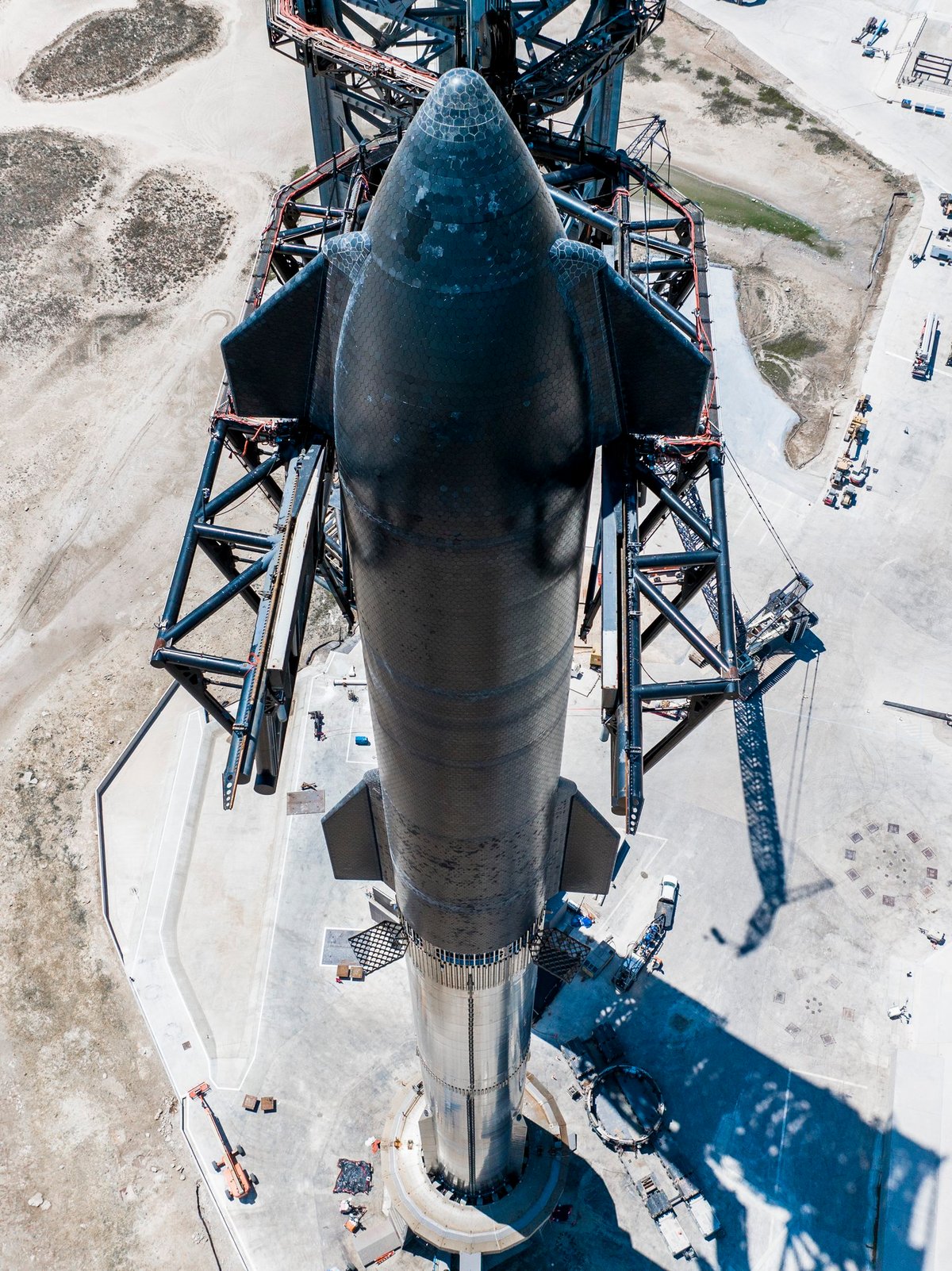
However, will Starship be able, in just two years, to refuel in flight in orbit around the Earth before landing on the Moon? The news makes you skeptical. One might even think that NASA should put Artemis IV before Artemis III, because this mission will be devoted to the Gateway lunar orbital station.
Except that for this mission, the American agency’s SLS rocket will be equipped with a new upper stage, the Exploration Upper Stage. And the latter is almost as late as Starship. It is very unlikely that it will be ready in 2026-2027, the date currently planned for it to take astronauts with a Gateway module.
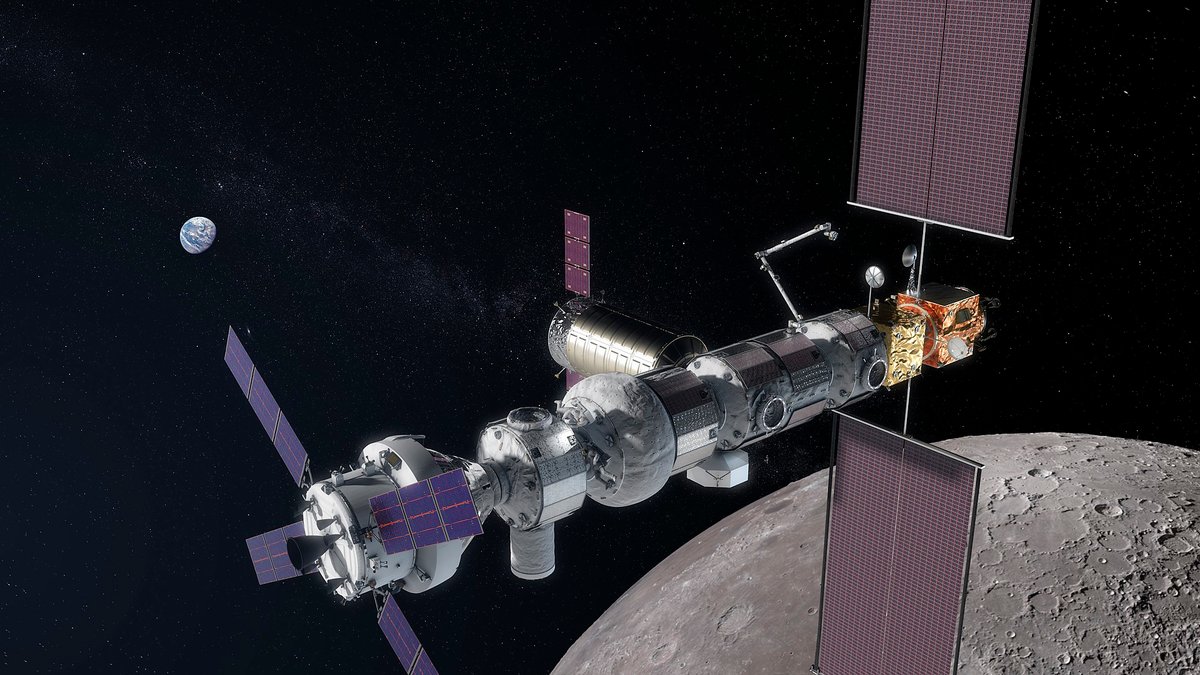
Around the Moon or on the Moon?
That’s all the difference! If NASA is succeeding in its bet with Artemis II, and will probably send 4 astronauts around the Moon next year, it is the beautiful front of a somewhat empty store. The technologies that will allow the Americans to set foot on the lunar soil again are not ready, neither are the developments of the SLS rocket, the contracts for the spacesuits were awarded last year (it’s a joke)… Worse , NASA even risks seeing its budget decrease in a complicated economic and political situation for the American government.
Artemis will not be threatened, but the objectives could well shift to a broader timetable. A shame when China also announced that it was aiming for manned lunar missions, but by concentrating its efforts from the outset on the colonization of the surface. Whatever happens, the adventure will be in order, and the return of the astronauts around and on the Moon will be exciting!
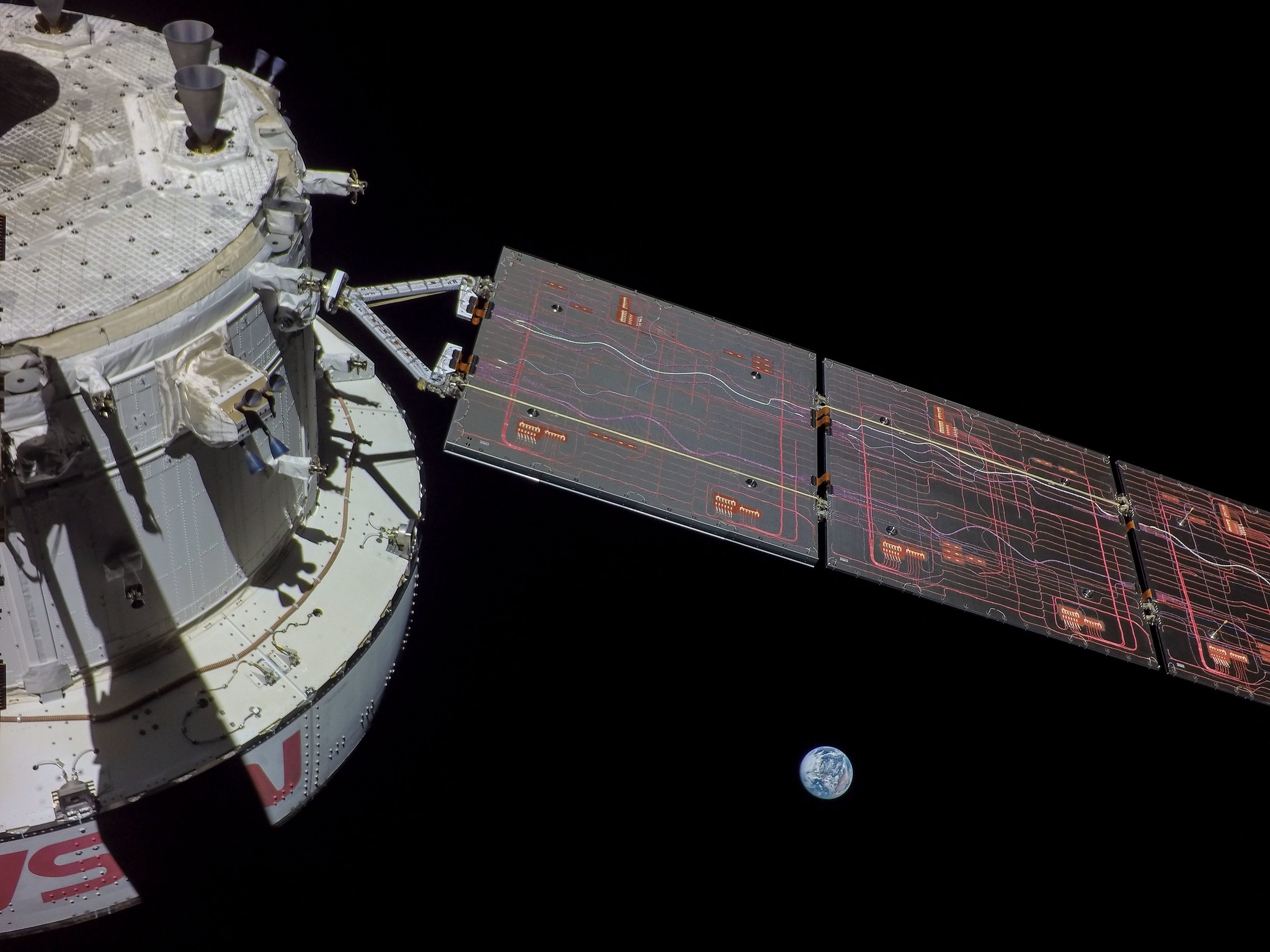
8